Velocity® Tunable External Cavity Diode Lasers
Overview
The Velocity® is our premier tunable diode laser system offering both wide and fine wavelength scanning. The laser cavity housing is shock proof, thermally insulated with active temperature control, and incorporates our unique magnetic damping technology to provide higher power, stability, and narrow linewidths.
- True mode-hop-free wide tuning
- Exceptional stability with shock-proof and thermally insulated housing and magnetic damping technology
- Fiber coupled option with robust permanent fiber coupling
- Easy-to-use wavelength control
Products
Applications
- Quantum Physics
- Micro-cavity resonators
- Quantum dots
- Spectroscopy
Specifications
Specifications1
| Model | Mode-Hop Free Tuning Range2 (Wide) |
Mode-Hope Free Tuning Range (Fine) |
Free-Space Output Power |
Fiber-Coupled Output Power |
Maximum Tuning Speed |
|---|---|---|---|---|---|
| TLB-6704 | 635-638 nm | >80 GHz (110 pm) | 8 mW @ 638 nm | 2.5 mW @ 638 nm | 5 nm/s |
| TLB-6712 | 765-781 nm | >80 GHz (150 pm) | 50 mW @ 780 nm | 25 mW @ 780 nm | 8 nm/s |
| TLB-6713 | 795-810 nm | >80 GHz (150 pm) | 20 mW @ 795 nm | 10 mW @ 795 nm | 8 nm/s |
| TLB-6716 | 830-853 nm | >60 GHz (150 pm) | 50 mW @ 850 nm | 15 mW @ 850 nm | 10 nm/s |
| TLB-6718 | 890-940 nm | >50 GHz (160 pm) | 15 mW @ 890 nm | 5 mW @ 890 nm | 10 nm/s |
| TLB-6719 | 940-985 nm | >50 GHz (180 pm) | 40 mW @ 980 nm | 15 mW @ 980 nm | 10 nm/s |
| TLB-6721 | 1030-1070 nm | >50 GHz (200 pm) | 60 mW @ 1064 nm | 20 mW @ 1064 nm | 10 nm/s |
| TLB-6722 | 1045-1085 nm | >50 GHz (200 pm) | 40 mW @ 1080 nm | 14 mW @ 1080 nm | 10 nm/s |
| TLB-6723 | 1070-1130 nm | >50 GHz (200 pm) | 30 mW @ 1110 nm | 10 mW @ 1110 nm | 10 nm/s |
| TLB-6724*** | 1270-1330 nm | >50 GHz (280 pm) | 30 mW @ 1300 nm | 15 mW @ 1300 nm | 15 nm/s |
| TLB-6725*** | 1390-1470 nm | >30 GHz (200 pm) | 45 mW @ 1450 nm | 22.5 mW @ 1450 nm | 15 nm/s |
| TLB-6726*** | 1420-1500 nm | >30 GHz (210 pm) | 20 mW @ 1480 nm | 10 mW @ 1480 nm | 15 nm/s |
| TLB-6728*** | 1520-1570 nm | >30 GHz (240 pm) | 30 mW @ 1550 nm | 15 mW @ 1550 nm | 20 nm/s |
| TLB-6730 | 1550-1630 nm | >30 GHz (260 pm) | 30 mW @ 1600 nm | 15 mW @ 1600 nm | 20 nm/s |
| TLB-6732 | 1700-1800 nm | >20 GHz (260 pm) | 10 mW @ 1780 nm | ** | 20 nm/s |
| TLB-6736* | 1975-2075 nm | >20 GHz (260 pm) | 2 mW @ 2030 nm | ** | 20 nm/s |
| TLB-6740* | 2350-2450 nm | >20 GHz (360 pm) | 4 mW @ 2400 nm | ** | 20 nm/s |
* Constant current mode only.
** Contact Sales for more information.
*** Contact factory for extended tuning range option.
Value
| Value | |
|---|---|
| Linewidth | <200 kHz (50 ms integration time) ;< 2.5 kHz (5 µs) |
| Wavelength Stability | 2 pm (over 1 hour ±2°C) |
| Power Stability | <1% (over 1 hour ±2°C) |
| Wide Tuning Resolution | 10 pm |
| Fine Tuning Resolution3 | 0.01% of full PZT tuning range |
| Fine-Frequency Modulation Bandwidth | >100 Hz (100% amplitude) 2 kHz (20% amplitude) |
| Current Modulation Bandwidth | DC-1 MHz (through controller) 50 kHz-100 MHz (directly to diode)4 |
| Longitudinal Mode | Single |
| Transverse Mode | TEM00 |
| Beam Pointing Stability | <50 µrad (±2°C) |
| Beam Size, typical | 1-2 mm |
| Beam Ellipticity, typical | 1:1-2:1 |
| Polarization5 | Vertical |
| Optical Output6 | Free-space, optically-isolated, fiber-coupled |
| User Interface | Controller front panel, USB |
| Power Supply Requirement | 100-240 VAC (50-60 Hz), power consumption < 170 W |
| Environment Temperature, operating | 15-30°C |
| Environment Temperature, storage | 0-50°C |
| Environment Humidity | Non-condensing |
Footnotes:
- Due to our continuous product improvement program, specifications are subject to change without notice.
- Motorized wide tuning and PZT fine tuning. Contact us for other available wavelengths and typical tuning curves. Wide tuning is mode-hope-free in constant current mode only.
- Resolution is 10 mV in PZT (0.01% of full PZT tuning range) through controller front panel or command interface. When tuning PZT using an external voltage source through External Frequency Modulation input, resolution is dependent on voltage source.
- Current modulation directly to diode through laser head SMA port.
- Free space (with and without isolator) output is vertically linearly polarized with respect to laser head base.
- Optically-isolated option includes an integrated 35 dB optical isolator for free-space output with approximately 75% power transmission. Fiber-coupled option includes isolator and permanently fixed Panda-type PM fiber with FC/APC connector for laser output. Wide-type alignment key aligned with the slow axis of the PM fiber. Dual stage isolation, other fiber types and connectors available upon request. Optically-isolated option for TLB-6732 available upon request. Fiber coupled option for TLB-6732, TLB-6736, and TLB-6740 available upon request.
- Constant current mode only
- Contact sales for more information
Features
Widest Range of Wavelengths

The New Focus Velocity is available at wavelengths from the UV to the mid-IR.
Linewidth: Heterodyne Beat Note Method
Historically, linewidth is measured over an integration time of 50 msec or longer with the heterodyne beat note method utilizing two independent similar ECDLs. This method is less dependent on the measurement setup and provides a true snap shot of spectral broadening.
Linewidth: Delayed Self-beat Note Method
The delayed self-beat note method is another linewidth measurement technique. While this technique filters out spectral broadening, it provides an instantaneous snapshot of the Lorentzian spectrum. The New Focus Velocity laser measures 2.5 kHz over a delayed 4.6 µs measurement.
Compatible Power Sensors
To verify and analyze the output power of your Velocity laser, we recommend the Ophir PD300 (7Z02410), PD300-IR (7Z02412) or 3A (7Z02621) thermal power sensor and Centauri laser power meter. Additional information on this laser measurement equipment can be found on the ophiropt.com website. Other Ophir sensors and meters may also be suitable for the Velocity, depending on application. Ophir also works with laser system developers to achieve embedded beam diagnostics to monitor system performance as an OEM solution.
Resources
Data Sheets
- Velocity Datasheet (640.1 kB, PDF)
Literature
- CW Tunable Lasers Brochure (3.8 MB, PDF)
- Ultrafast Lasers Brochure (4.6 MB, PDF)
- Advancing Photonics-Based Quantum Technologies Research (7.3 MB, PDF)

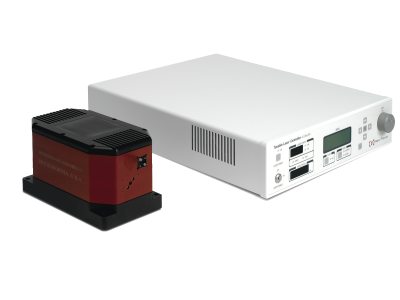
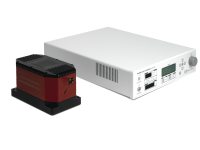
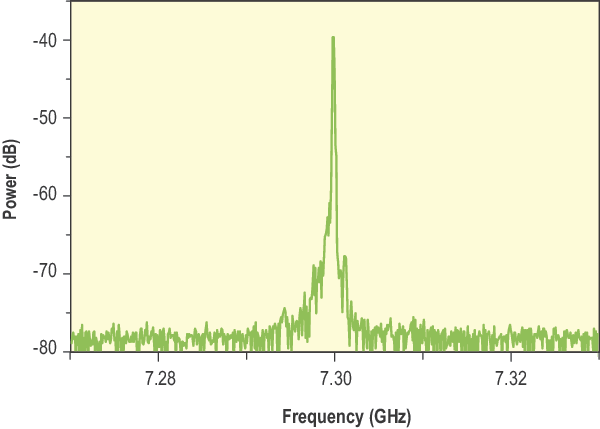
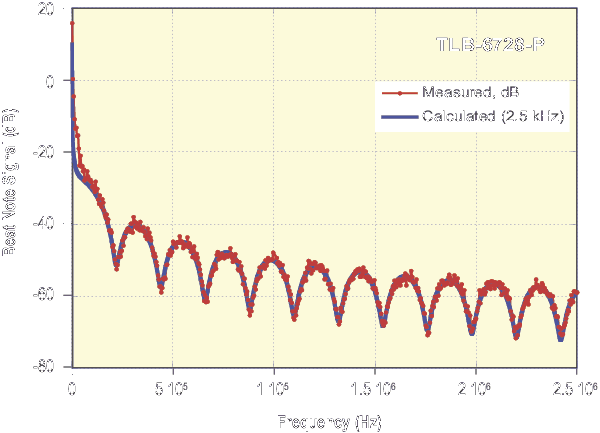
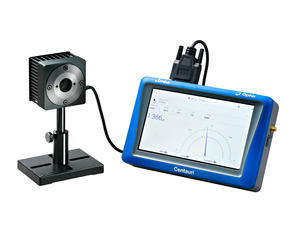
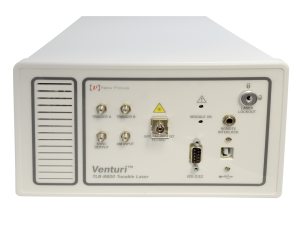
 Ultra-High Velocity
Ultra-High Velocity